People often mistake the terms impact drill and hammer drill, even in stores. No wonder we end up buying the wrong tool. Head up to your local store, and you’ll find dozens of tools meant only for drilling or driving screws. Choosing the right tool for your job can be overwhelming. When it comes to impact drills and hammer drills, we often get confused. Although these tools look similar, each is designed for a different task. In this article, we will compare Impact Drill vs Hammer Drill to help you choose one.
Contents
Our Verdict
Each power tool has its use for most of the common household applications. If you’re doing construction work, you might want to buy a hammer drill. But you can get the most use out of an impact drill. Impact drills are more often used than hammer drills.
Impact Drill Vs Hammer Drill: Difference
Let’s take a glance at the differences between these two tools.
| Features | Impact drill | Hammer drill |
|---|---|---|
| Working principle | Hammering action on the material perpendicular to the bit | Hammering action in the direction of the hole |
| Size and design | Heavier and bulky | Stubby. Short head length |
| Tool holder | ¼’’ hex socket | Three jaw chuck |
| Uses | Drilling on hard surfaces | Drilling on hard surfaces |
| Price | Check Price | Check Price |
Hammer drills and impact drills are meant for specific tasks. We will now go through some key differences between these tools. This will help you to understand the use and function of each tool.
1. Working Principle
The hammering drill delivers recurring blows in the direction of the hole that you. That means it transfers the force in the axis along the length of the drill. This provides extra pressure on the direction of the hole. It also has an adjustable clutch to control power.
As mentioned earlier, it uses a hammering mechanism. This causes the bit to move in and out while drilling, causing a loud sound. Imagine you’re using a standard drill. You try giving more pressure on the back of your drill while drilling. This is precisely what a hammer drill does. When a person uses it, it feels like a hammer hitting very fast as it drives into the hard material. This causes a hammer drill to function in a back and forth movement.
The impact drill uses a different manner of operation. Unlike the hammer drill, this tool delivers blows in the direction of the rotating drill bit. This is generally meant for driving in screws with extra force. It uses a rotary action. There is no top to bottom force on the bit.
An Impact drill increases the pressure perpendicular to the bit. This has been generally described as increasing the force on a driver around the screw. It uses hammering as well as percussion power. But it does not have an adjustable clutch to control the power. These tools are usually meant for driving in screws and nut that need higher torque.
2. Size And Design
Impact drills and hammer drills may look similar. But there are some differences in their size and design. Regular hammer drills have a bulky internal clutch. They tend to be heavier too. But impact drills are much more compact, unlike the hammer drills. They are also nice to handle in tight spaces. The impact drill is stubby around the barrel with a short head length. But the hammer drills are generally bigger than the impact drills. They tend to have a long barrel.
3. Tool Holder
Impact drills and Hammer drills also accept different types of bits. A hammer drill has a three-jaw chuck. It can accept both round and hex bits. But the Impact drill does not consist of a chuck. They have a ¼ hex drive. This allows it to accept only a hex-shaped driver bit into it.
Impact Drill Vs Hammer Drill: What Is It?
What Is An Impact Drill?
An impact drill is also known as an impact driver. This power tool can exert hammering blows axially. At the same time, it provides high rotational torque, as well as. These tools are usually used to drive screws and fasteners into a material. You can also use it to drill holes.
Impact drills use both rotary power as well as percussion power. It can seem like a cordless screwdriver unless it requires more power. It provides power in quick bursts for more torque when needed. This action helps to drive in the screw forward. It might look like they are like power drills, but there is one thing that sets impact drills apart from regular power drills.
When the force provided by the motor is not enough, the hammering mechanism sets into motion. The hammering mechanism takes place in the direction of rotation. This results in higher torque. This means that one can use impact drivers ( check the comparison between the two drills ) on bigger or longer screws, unlike regular drills. They are usually used for driving or loosening screws that demand higher torque.
What Is A Hammer Drill?
Hammer drills are usually designed to fulfill a specific work. One can use them to drill holes into hard surfaces that might be difficult to work with using fewer power tools. They can bore holes into surfaces like concrete or other similar materials with ease. It can drill holes into tough materials enough to insert a screw or nut. There are generally regular hammer drills and rotary hammers.
All hammer drills use the hammering mechanism. This moves the drill back and forth in a longitudinal axis. These power tools exert force right into the bit. Most of the hammer drills have a switch to turn of the hammering mechanism. So you can also use it as a regular drill. But people don’t usually do so due to its heavyweight.
Impact Drill Vs Hammer Drill: When To Use?
When Do You Use An Impact Drill?
Impact drills are generally used to drive in screws and nuts into hard surfaces. It functions way better than a cordless driver. They can drive nuts into studs and sheet metal. Impact drills deliver high torque, which is ideal for driving in large screws with ease. Impact drills run in only one gear. But specific advanced tools can have three gears. It protects the user’s wrist as the force is mostly downward.
It requires minimal effort from the user. Also, it is easy on wrists. You can drive in screws and fasteners all day long without stressing your wrists. Also, it does not strip your screws that easily. You can use short pulses to tighten screws effectively.
The extra torque on the screw head makes for faster. The primary function of an impact drill is to drive in screws. But you can also adjust it to ¼ hex shank drill bit and use them for drilling. But the holes are not that precise when compared to a hammer drill.
When Do You Use A Hammer Drill?
A Hammer drill is designed with the sole purpose to drill in holes into rigid materials. They can drill through hard materials like concrete, bricks, granite, and other materials. Hammer drills are the perfect tools for tearing ceramic tiles apart. If you want to drill holes into thick materials, the hammer drill won’t disappoint you. You’ll find out that impact drills do not have enough power to drill a sufficient hole.
But you might get a hole sooner or later. But a hammer drill will help you get your work done efficiently. It also takes less time to bore a hole than an impact drill. The hammer drill uses an extra force called the hammering action. The force applied is exactly like that of a hammer. While drilling, the force is usually applied right on the material that it hits. The hammering mechanism that these tools use helps to bore a hole with ease.
Hammer drills are used for heavy-duty materials. They are often used in masonry and construction work. Most of the hammer drills have a switch that can turn off the hammering mechanism. So you can use them as a regular standard drill. You can use it as a high-quality screwdriver without excess power. This makes it a two in one tool.
Impact Drill Vs Hammer Drill: Who Should Use?
Each tool fulfills a specific task. So everyone can benefit by keeping both the tools in your toolbox. But, not everyone works on the same task. Each one has its own different needs. So it’s up to you what tool you should use depending on the task you’re working on. You can use both the tools to drill through wood. But that’s not a reason to buy this tool. You can go to your local store and buy a regular cheap drill to work on wood.
If you need a tool for masonry or construction purposes, you can use a hammer drill. This is the perfect tool for professional-level constructions. It is a lot more potent than an impact drill to bore a hole. An impact drill is an ideal tool if you want to drive in screws and nuts. You can also use this tool for loosening or fastening nuts and bolts. Impact drivers are efficient for amateurs as they are compact.
They deliver more torque than any ordinary cordless drill. These power tools tend to be more user friendly than a full-size hammer drill. They also tend to be less costly than hammer drills. This makes them more useful while costing less. That is how often do you drill a hole on your wall? That is why many people prefer to buy impact drills. But, if you’re working on concrete, you might consider getting a hammer drill. Several stores will allow you to rent a tool for such purposes.
Impact Drill vs Hammer Drill: Recommended Products
1. Milwaukee 2753-20 M18 Fuel 1/4 Hex Impact Drill
- M18 fuel 1/4 hex imp Driver tool only
- The product is easy to use and easy to handle
- The product is highly durable
The Milwaukee Impact Driver/ drill is a lightweight power tool weighing about 2.6 pounds. It uses a lithium-ion battery. This is one of the best brands for impact tools and impact wrenches. It also comes with various settings. So you can also use it for tasks requiring less power. We highly recommend using this tool.
2. DEWALT DCF885C1 20V Impact drill
- Compact (5.55 front to back), lightweight (2.8 lbs) design fits into tight areas
- 3 LEDs with 20-second delay after trigger release, provide visibility without shadows
- One-handed loading 1/4 hex chuck accepts 1 bit tips
This tool is a super lightweight impact drill. It weighs only 2.8 lbs. It delivers a lot of power and is efficient to use. It provides 1400 lbs. of high torque. Some say that the battery does not last long. But this depends upon the work you are using it for.
3. DEWALT DCH273B Hammer Drill
- Cordless hammer drill has 2.1 Joules of impact energy for fast drilling in concrete.
- SHOCKS ACTIVE VIBRATION CONTROL System of DEWALT 20V hammer drill reduces vibration felt by the user at the handles,...
- Lightweight design makes this DEWALT 20V brushless hammer drill ideal for rod hanging, seismic & safety attachments,...
This is a very convenient and user-friendly tool. It offers vibration control. This means it causes less vibration and increases comfort. It delivers incredible power and can provide up to 4,600 blows per minute. The batteries are sold separately.
4. Makita XPH07Z LXT Hammer Drill
- BL Brushless Motor delivers 1,090 in.lbs. of Max Torque
- 0-31,500 BPM for fast hammer drilling in masonry materials
- Efficient BL Brushless motor is electronically controlled to optimize battery energy use for up to 50% longer run time...
This power tool comes with a brushless motor for longer run time. It delivers about 31,500 blows per minute. It weighs around 5.9 lbs. But batteries are not included to reduce user fatigue.
Frequently Asked Questions
Q. Can you use impact drivers to drill holes into concrete?
Q. Do impact drivers have a clutch?
Q. Is buying a hammer drill worth it?
Q. Should one buy an impact driver or an impact wrench?
Conclusion
Like all power tools, these two tools are generally designed for different tasks. Each of them is used in a variety of varying circumstances. Now you know what makes an Impact drill different from a Hammer drill. The similar names of these tools can be confusing. But we hope this article has given you a good idea of the differences between Impact Drill vs Hammer Drill. So next time, remember to grab the right tool for the right purpose.
DEWALT DCF885C1 20V Impact drill - Editor's Choice
Summary
This tool is a super lightweight impact drill. It weighs only 2.8 lbs. It delivers a lot of power and is efficient to use. It provides 1400 lbs. of high torque. 3 LEDs with 20-second delay after trigger release, provide visibility without shadows






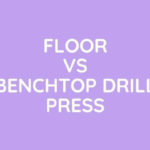
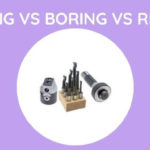
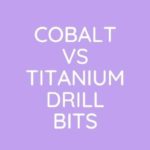
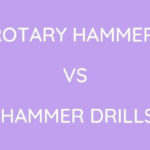
![Best Masonry Drill Bit In [year] Masonry Drill Bit](https://thehemloft.com/wp-content/uploads/2020/08/Masonry-Drill-Bit-150x150.jpg)
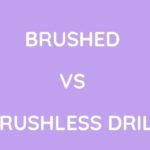
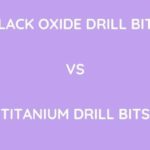
Leave a Reply